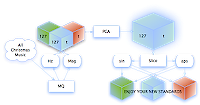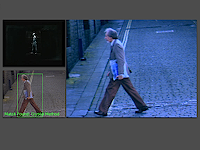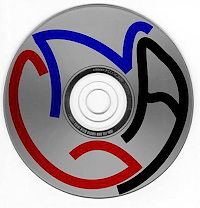What are the formulaic traits that determine the
popularity of music? Mikey Smith, a music student who layers popular songs over
each other, shows that there may, indeed, be more than casual congruence
between works on the top of the hit charts. Along with Smith’s montage project,
other works in this section explore the circumstances and structural
arrangements of popular music from the 18th Century through today.
Amy Alexander's project SVEN (aka American Idol To the People), evaluates traits of people caught on surveillance camera to determine their prospects for success as rockstars. While Alexander's project makes an exercise of identifying objective characteristics of musical success, Jason Freeman's N.A.G (Network Auralization for Gnutella) aims to aurally represent the relative popularity of music that has already been created, recorded, and widely distributed. Brian Whitman's A Singular Christmas album, a sonic summary of commonalities between Christmas songs, and Lief Inge’s 9 Beet Stretch, a dramatically slowed-down version of Beethoven’s 9th Symphony, explore the nuances and structures of existing popular music. Finally, Eric Wubbels and Jeff Snyder’s project parodies heavy-metal fan tribute web sites writ upon fractal functions.




